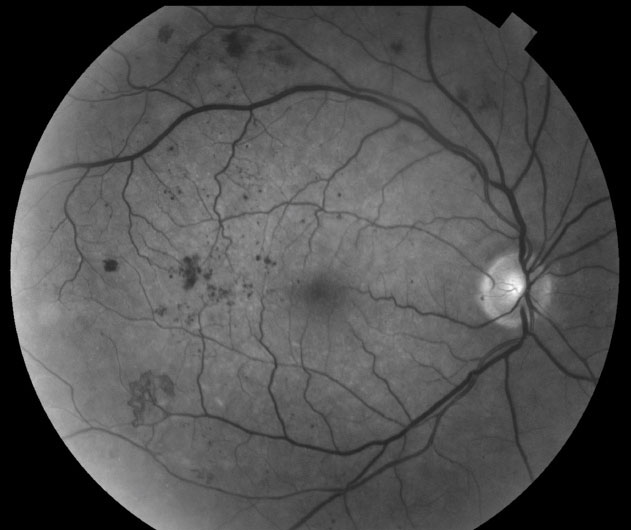 |
|
The decreasing prevalence of DR in untreated type 2 diabetes could help explain the lower rate of blindness in these patients in developed countries, researchers suggest. Photo: Steve Ferrucci, OD. Click image to enlarge. |
Although type 2 diabetes mellitus (T2DM) is increasing in prevalence globally, the rate of diabetic retinopathy (DR)-related blindness has actually decreased in recent years in developed countries. This downward trend could be a consequence of various factors, such as increased glycemic control in T2DM patients due to the availability of new drug classes (DPP4 inhibitors, GLP-1 receptor agonists and SGLT2 inhibitors), advancements in ophthalmic treatment techniques (i.e., steroid use, laser treatment and vitrectomy for severe DR) and the development of new anti-VEGF agents for diabetic macular edema.
Researchers recently proposed another possible explanation for the reduced rate of blindness in patients with T2DM, which is the decrease in prevalence and severity of DR over time in patients with previously untreated type 2 diabetes. To investigate this hypothesis, the research team assessed the prevalence and severity of DR in untreated diabetes patients in Japan over 30 years.
The study included data from 1,979 type 2 diabetes patients from a single hospital in Tokyo who were diagnosed between 1986 and 2018. Patients were divided into four groups based on the decade of their first visit: 1986-1987, 1996-1997, 2006-2008 and 2016-2018.
Researchers observed a significant decrease in DR prevalence from 1986-1987 to 2016-2018 among previously untreated T2DM patients seen at the study hospital for the first time. The table below shows the retinopathy prevalence rates among this population from each of the four time periods.
Table 1. DR Prevalences Among Untreated T2DM Patients at Single Hospital in Japan
Years | DR Prevalence |
1986-1987 | 25.5% |
1996-1997 | 26.2% |
2006-2008 | 22.2% |
2016-2018 | 15.6% |
The data also revealed sex differences in the prevalence of DR in patients with untreated diabetes. Female patients had a higher prevalence of DR than their male counterparts (30.2% vs. 21.3%), which researchers believe could be related to the finding that women had significantly higher systolic blood pressure (SBP)—a known independent risk factor for DR development—than men (134 vs. 138). “The SBP was also significantly higher in the patients with DR than in those without DR” at 133 vs. 141, the researchers reported in their paper.
Unlike DR prevalence, disease severity did not differ significantly between the four time periods. However, the researchers did find that the years 2016-2018 saw the highest rate of mild retinopathy, which “could be explained by the shorter mean duration of untreated T2DM in patients in [2016-2018] as compared with that in the earlier measurement years,” they wrote in their paper. “In fact,” they added, “the incidence of DR has been reported to increase with increasing duration of T2DM.”
Circling back to their hypothesis, the researchers surmise that “a decrease in the rate of DR prevalence could explain, at least in part, the observed reduction in the rate of blindness in patients with T2DM.” They conclude, “Taken together, early detection of T2DM and early medical consultation may be important to prevent the onset and progression of DR.”
Kubota T, Todoroki-Mori K, Iwamoto M, et al. Thirty-year trends in the prevalence and severity of diabetic retinopathy at the first visit in patients with untreated type 2 diabetes mellitus. Ophthalmic Epidemiology. August 8, 2024. [Epub ahead of print]. |


